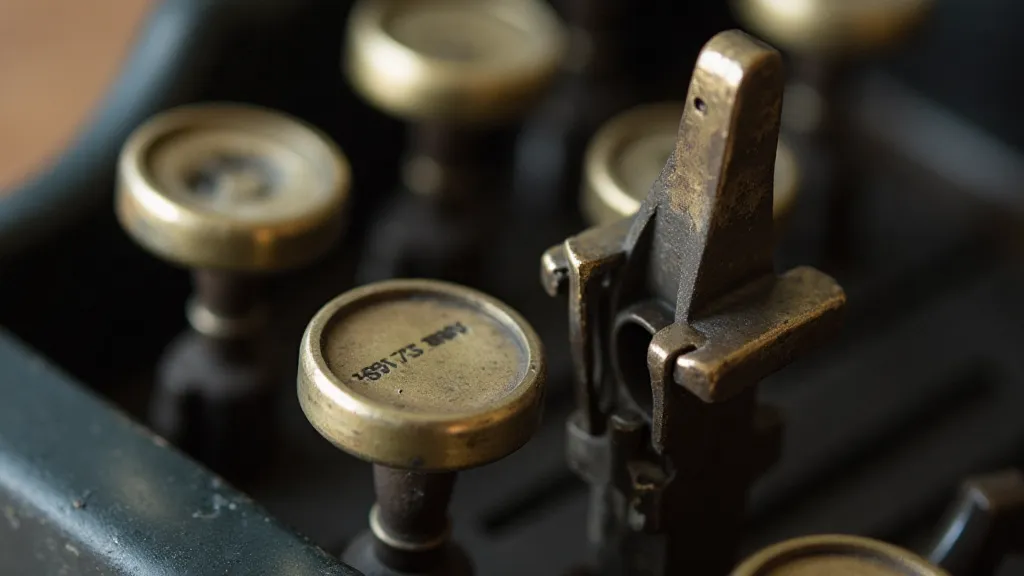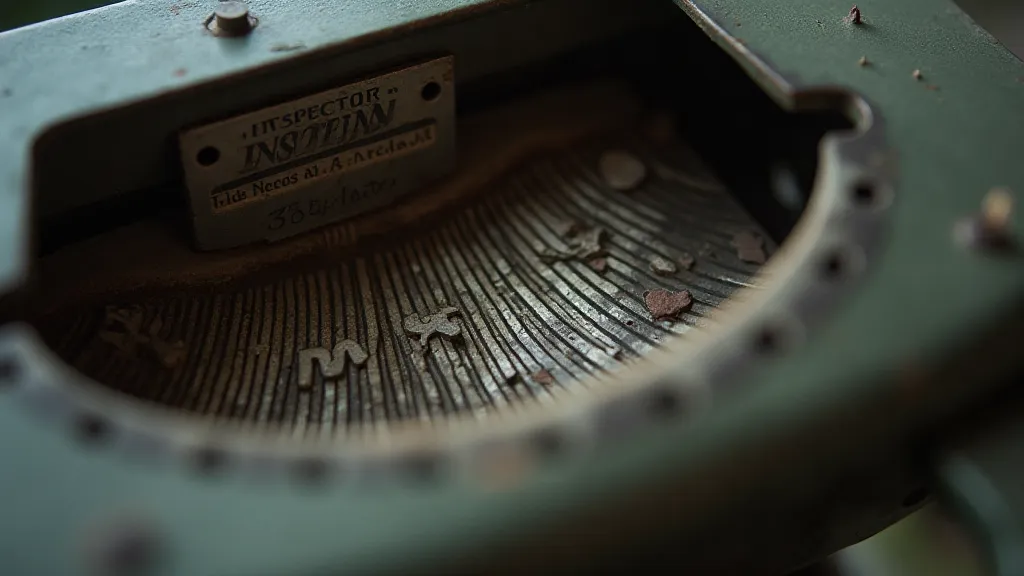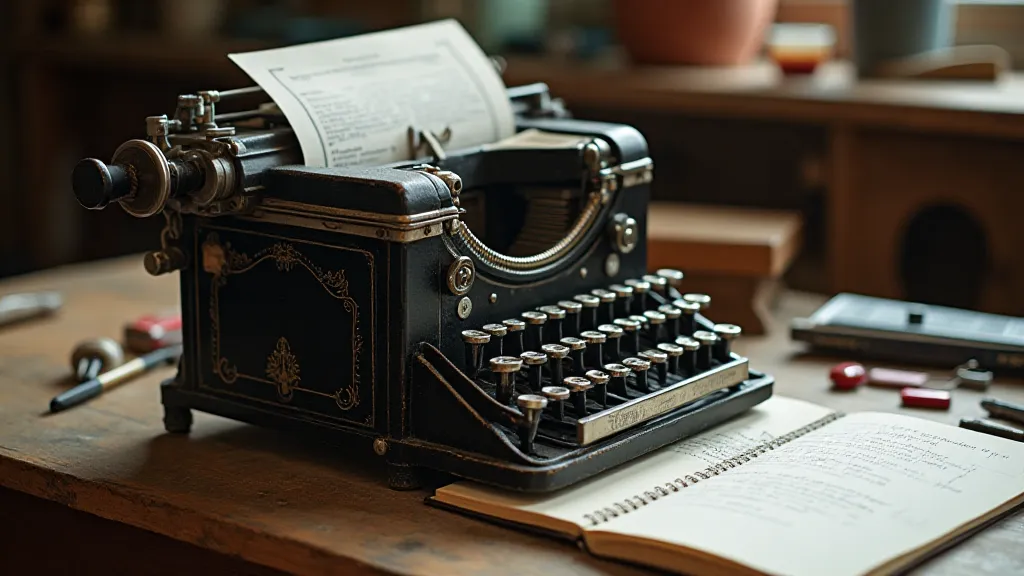The Taxonomy of Keys: Deciphering the Language of Typewriter Markings
There’s a particular scent that clings to antique typewriters – a dusty perfume of aged metal, dried ink, and countless untold stories. It’s a scent that instantly transports me. I remember my grandfather’s study, bathed in the afternoon sun, the rhythmic clatter of his Underwood filling the air as he meticulously drafted his lectures. He rarely spoke about the machine itself, but I could feel his connection to it, a quiet reverence for its mechanism and the power it held – the power to translate thought into tangible words.
We often appreciate antique typewriters for their aesthetic appeal: the graceful curves of a Corona, the robust solidity of a Remington, the elegant Art Deco flair of an Olympia. But beyond their visual charm lies a wealth of detail, a complex language etched into their frames and inscribed upon their keys. These aren’t merely marks and numbers; they're fragments of history, whispers of factory practices, and clues to a machine's journey through time. Learning to read this "taxonomy of keys" unlocks a deeper understanding and appreciation for these remarkable objects.

Serial Numbers: Your Machine's Identity
The serial number is the cornerstone of a typewriter's identification. Typically found on the frame, often near the escapement mechanism or under the carriage, it acts as the machine’s unique identifier. Different manufacturers used different numbering systems. Remington, for example, used a chronological numbering system providing an approximate date of manufacture, while Underwood used a more complex system incorporating manufacturing year, factory location, and a production sequence number. Understanding these systems allows you to pinpoint a machine’s age and, sometimes, even its factory of origin. A quick online search for a manufacturer’s serial number guide will often yield a wealth of information.
The significance of a serial number extends beyond mere dating. It can help trace the machine’s original intended market – was it destined for Europe, North America, or somewhere else entirely? Rare or unusual markings might even suggest a customized order, hinting at a previous owner of considerable means or a unique application for the machine. While a pristine, fully documented history is rare, even partial information gleaned from the serial number can enrich the ownership experience. Consider the lasting influence of the Remington, for instance - its serial number can often provide clues to its position within the company's historical output and evolution of design. The very nature of the manufacturing process and the evolution of design is fascinating, revealing so much about a company's trajectory.
The manufacturer’s emblem isn't just a brand identifier; it's a snapshot of design trends and advertising strategies of the era. Early typewriters often featured ornate, almost Victorian designs. As the 20th century dawned, the logos became simpler, more streamlined, reflecting the influence of Art Deco and the rise of mass production. Coronas are recognizable for their distinctive script and often elegant font. Olympia’s stylized, geometric design embodies the spirit of German design in the mid-century. The impact of these design choices extended far beyond mere branding, influencing popular culture and consumer aesthetics.
Interestingly, sometimes these logos would be subtly altered depending on the intended market. A Remington sold in Europe might feature a slightly different emblem or font compared to its American counterpart. The presence of a logo in a foreign language is a clear indicator of this.
Beyond the primary markings, a surprising amount of information is encoded in the smaller details. Typeface designation, usually found near the platen, indicated the standard typeface the machine used. While most standard machines shipped with Pica or Elite, some models were equipped with more specialized typefaces, like Gothic or even novelty fonts. These indicate a machine that may have been intended for a particular industry or a more personalized writing experience. The story of these fonts and their evolution is a fascinating one, and exploring the font’s forgotten form can reveal a surprising amount about the typewriter’s history and intended use. Consider how these particular fonts affected the overall feel and aesthetic of the documents produced – did they convey a sense of formality, creativity, or something else entirely?
Ribbon color codes, often found as a small, embossed code on the spool cartridges, are another often-overlooked element. These codes referred to the specific ink color and opacity of the ribbon. While the system was primarily for factory use, understanding these codes allows you to replicate the original ribbon color and contribute to a more authentic restoration.
The most intriguing markings are often the most subtle – the factory stamps and internal markings left by the production line. These aren’t intended for the end-user, but they provide invaluable insights into the manufacturing process. Look for small inspection stamps, indicating quality control checks at various stages of production. These can reveal the name of the inspector and the date of inspection, providing a glimpse into the daily lives of the factory workers. Examining these stamps offers a window into the industrial landscape of the time, revealing the methods and standards employed in mass production.
Sometimes, these markings reveal something truly unexpected. I once restored a Royal Standard that bore a faint, hand-stamped message inside the carriage – "Tested by Eleanor." It’s a tiny detail, but it humanizes the machine, transforming it from a faceless object into a product touched by a real person, a worker who took pride in her craft. It made the restoration feel less like a mechanical process and more like uncovering a hidden story. The sounds these machines produced, too, have a certain rhythm and cadence, and exploring the cadence of clatter can deepen one’s appreciation for the artistry involved in their creation. It’s easy to overlook the sheer amount of skill and precision required to craft these machines, and these subtle markings offer a tangible connection to the human element.

Deciphering the language of typewriter markings isn’t about memorizing a comprehensive list of codes and symbols. It's about combining knowledge with careful observation, patience, and a genuine curiosity. Research manufacturer’s guides, join online communities of typewriter enthusiasts, and compare your findings with those of others. The legacy of these machines extends beyond the technical details, influencing literature and inspiring creativity. Imagine the many narratives that might have been left unrecorded, the potential left untapped, because of a broken ribbon or a missing key – the very idea that a machine, an inanimate object, could have such a profound impact on human expression is truly remarkable. The impact isn’t limited to the documents themselves; these machines also fostered a certain mindset, a discipline, and a connection to the craft of writing.
Restoring antique typewriters is more than just cleaning and lubricating; it’s about preserving history and honoring the craftsmanship of a bygone era. Each marking, each emblem, each subtle detail contributes to the machine’s story. By taking the time to understand this silent language, we unlock a deeper appreciation for these remarkable machines and the people who created them.

Beyond the mechanics and markings, lies a deeper exploration into the very nature of creativity and how tools shape the expression of ideas. Consider how the limitations of a typewriter – the fixed typeface, the lack of instant correction – might have influenced the writing styles of generations. Did it foster a certain discipline, a deliberate approach to language? Or did it spark a playful defiance of convention, a willingness to experiment with form and structure? The tactile experience of using a typewriter – the feel of the keys, the sound of the clatter – also played a crucial role in the creative process, engaging the writer in a way that digital tools simply can’t replicate. The absence of immediate error correction forced writers to be more thoughtful and deliberate in their word choices, contributing to a certain level of precision and elegance in their writing.
The ongoing fascination with antique typewriters is a testament to their enduring appeal – not just as objects of beauty and historical significance, but as symbols of a different era, a time when technology and creativity were intertwined in a unique and powerful way. They represent a shift from a digital landscape to one where the tangible and the intentional were paramount.





